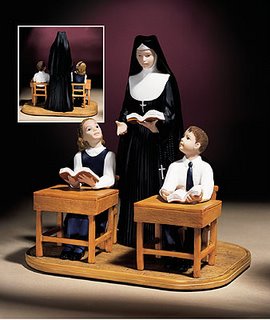 October 20, 2006
October 20, 2006For the past few weeks I’ve been working as a teacher in a language school in Geneva, but I’m leaving after this week in order to find something closer to home. This is too bad in a way, because it will mean the end of my daily communion with The Method. The Method is the teaching approach we’re supposed to use to bring the light of English to our benighted francophone students. It’s also, I imagine, about as close to organized religion as corporate language instruction ever dares venture. “Just trust in The Method,” our boss would say repeatedly during our two-week initiation period for new teachers, smiling benevolently upon us. “Its ways may seem strange to you now, but in a few days they will become part of you.” Being living embodiments of The Method, however, did not give the teachers the right to interpret its doctrine for ourselves. In fact, the very word “teacher” turned out to be a misnomer: as our starry-eyed trainer was fond of reminding us, “it’s not you who teaches. The Method teaches.”
If you’ve read this far, you might be getting curious as to what exactly The Method entails. Well, it’s pretty simple. The instructor fires prescribed questions at beginner students extremely quickly, then interrupts their stuttering replies and answers the questions himself. The students are thus left confused and humiliated, and whole learning process can begin again. This goes on for fifty minutes, and never once is any student allowed to formulate a sentence without the teacher cutting in and taking the words out of his mouth.
Such an approach may sound strange enough to the uninitiated, but even more peculiar is the actual material we teach. For one thing, we introduce new vocabulary in an order that an infidel might call random: the word “madhouse”, for example, is taught before the word “hello.” And the many of the prescribed questions border on the macabre. They begin innocuously enough – “What colour is this pencil?” – but very quickly proceed to some quite different themes. “Is it pleasant to see a dead person?” the method probes, and later asks casually: “If you jumped from the top of a very tall building, would you definitely die?” (“Yes,” the hapless student is forced to respond, “I would definitely die.”) This last provides a nice segue into an inquiry introduced a couple pages later: “Why do people kill themselves?” “Because they have failed in life!” The Method thunders at the students through the humble medium of the teacher, drowning out their flawed, hesitating responses.
No comments:
Post a Comment